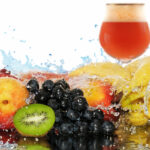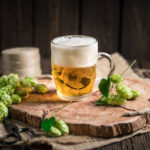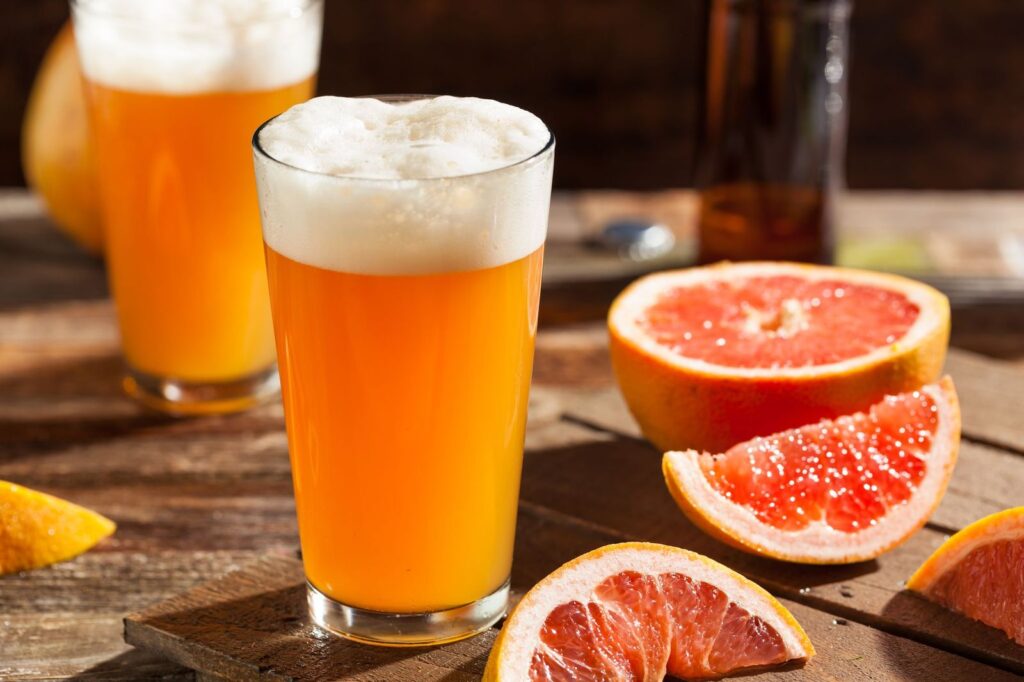
Without a doubt, beer deserves a rightful spot as one of the most consumed drinks in the world. It comes in third place, just after water and tea. There are so many varieties of beer in the world that’s almost impossible to try them all. But there is one category that stands out as being quite extraordinary – fruit beers.
Technically, every beer that has some type of fruit as a primary or a secondary ingredient is considered to be a fruity beer. This is a broad range of beers, and there are still many possibilities and combinations to create.
Fruit Beer Characteristics
As you might expect, each fruit beer has its own unique characteristics that are imparted by the type of fruit used. The specific characteristics will also be affected by how the fruit is used in the brewing process and what other ingredients are included in the beer.
Appearance
Its appearance should highlight the primary beer style. In lighter-coloured beers, such as lagers, the beverage can take on a tint that resembles the colour of the actual fruit but is a few shades lighter. The colour of the fruit may also tint the head. The flavourful fruit beer can have so many tones and shades, that it may be difficult to choose based on the colour itself.
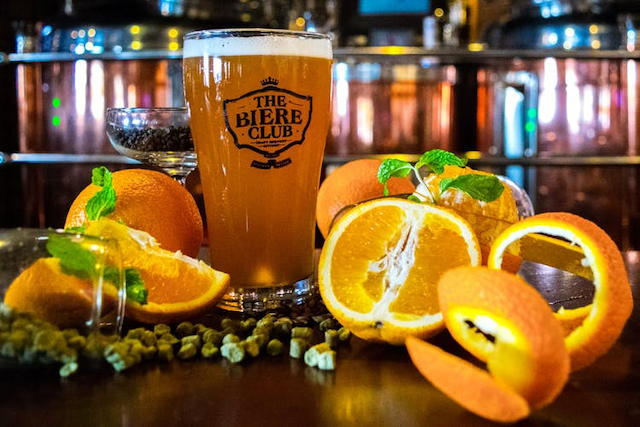 Source: lbb.in
Source: lbb.in
Aroma
The aroma is one of the most important characteristics of this beer. As you know, some fruits are more flavourful than others, so when you put them in beer some of them will come forward more than others. For example, fruits like raspberries and cherries are more overpowering than blueberries or peaches.
The aroma shouldn’t be fabricated, too powerful or hostile to the mouth. When there’s fruit, other aromatics of a particular style, such as hop flavour, maltiness, or yeast byproducts, may be less apparent.
Depending on the base style, the aromas of hop and malt can perfectly complement the fruit or they can be completely lost in the aroma. Low levels of fruit acidity are okay when they complement the fruit’s naturally acidic flavour. Overall, the fruit should provide the beer with a layer of richness without detracting from its core characteristics.
Mouthfeel
Mouthfeel refers to the overall feel of the beer in terms of lightness, dryness and carbonation, while you drink it. With the mouthfeel, you should be able to recognise the base and the main ingredients. For example, a sour ale will feel different from a wheat one. You should remember that fruity beers contain fermentable, which makes them thinner and lighter.
Flavour
Similar to the aroma, the flavour should also have something distinct added by the fruit. Once again, the underlying beer style should serve as a guide because this can vary from subtle to strong. With the fruits, the sugar is usually dried out and the flavour is light.
That’s why these beers aren’t that sweet. You shouldn’t expect that a strawberry beer, will taste like strawberry juicy. Yes, it’ll have a strawberry hint and a back flavour, but the balance between the fruit and the hops will be evident.
Brewing Process
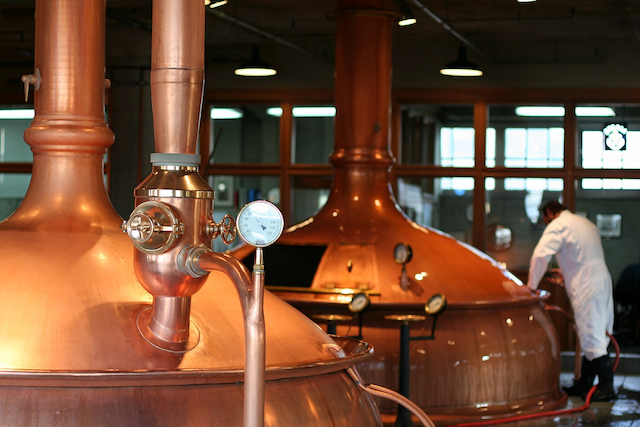 Source: beerconnoisseur.com
Source: beerconnoisseur.com
Brewing with fruit is not that different from brewing without it. There are no strict rules about the whole process. It’s just an experimenting process where you discover different combinations and flavours along the way.
The Base
The base is very important because it’ll influence the type of fruit and how much fruit goes into the beer. When you want to experiment with fruit, always choose a beer recipe that you’ve done before, something you’re sure in. Also, make sure this recipe doesn’t have a lot of hop aroma or flavour.
Oftentimes when you combine fruit and hops, you get an unpleasant aroma and flavour. The most common beer styles to mix with fruit are porters, stouts, wheat and high-gravity beers. Of course, you can experiment with the others as well.
It’s not difficult to decide which fruit goes with which beer. It’s common sense actually. Apricots, blueberries, peaches, and other fruits with subtle flavours work best with lighter beers.
Because of the hefty malt content and delicate fruit flavour, we can all definitely predict that an apricot stout will be challenging to make, while a pumpkin lager doesn’t really seem tasty. However, if it’s an apricot blonde or a pumpkin brown ale, then we have something interesting and something worth trying.
The Balance
As with everything else in life, having the right balance is essential. But in this case, is not about the balance between the malt’s sweetness and the bitterness of the hops.
When fruit is involved, there should be harmony between the sweetness, the acidic quality and the bitterness. Acid is an important element that brings out fruity qualities. You can add it as malic, citric and even lactic acid, up until bottling time.
But before just pouring the acid inside, make a couple of tests. Put a different amount of acid in different amounts of beer, and see which one works best, and which taste goes with your flavour profile. You can also add acid by adding acidic fruits together with the main fruit. Who knows, you may get the best Australian craft beer you’ll be proud of. The yeast should be clean fermenting and high attenuating.
The Fruit
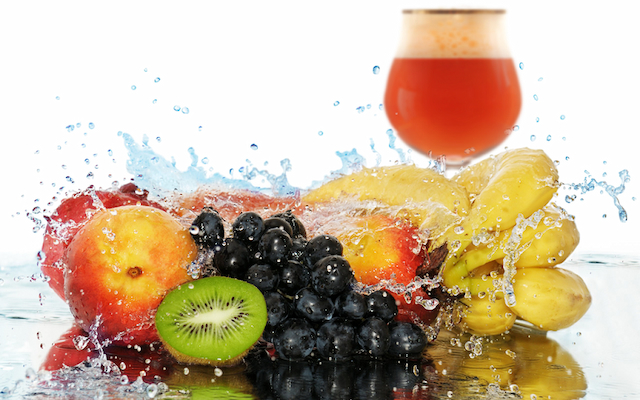 Source: thepizzapress.co
Source: thepizzapress.co
If you’re using the whole fruit, go shopping during prime time and check the ripeness carefully. Look for good discounts at your neighbourhood farmers’ market, and keep in mind that overripe fruit works best. Before using the fruit, freeze it. This promotes the opening of cell walls and intensifies the taste and fragrance components. plus, you can also use dried fruit, syrups or even canned fruit, just avoid things that aren’t 100% fruit.
Fruit is fairly seasonal so you can’t always make the fruit beer you want, but this can be a good thing. You’ll try something new every time you brew. Plus, there’re additional tasks like cleaning, pitting and cutting the fruit. You can add fruit many times during the brewing process.
But the most common time to add it is during fermentation or during the boiling phase. Oftentimes people add it to a secondary fermenter. This way you can taste the beer before you add the fruit. Also, you can avoid contamination from any bacteria from the fruit.
Be careful when you combine fruit and fermenters. There is a possibility that the fruit will plug the airlock, and cause an explosion. So, it’s safer to use a plastic bucket when brewing with fruit.
Deciding how much fruit to add depends on your personal preferences. If you want to calculate exactly how much fruit you need, there are formulas that can help you, but a rough number is 500-1000g of fruit per 3.7l of beer.

